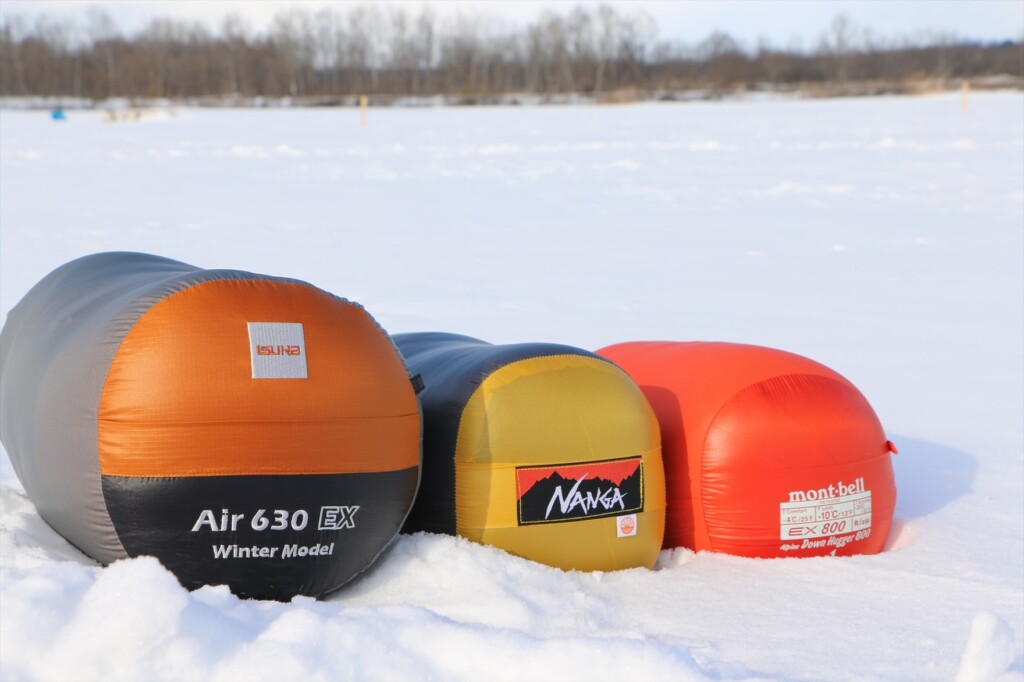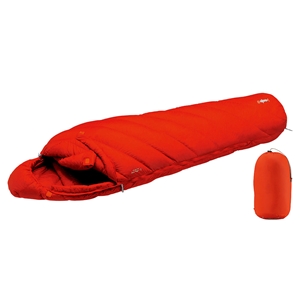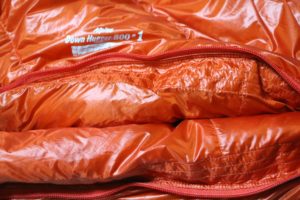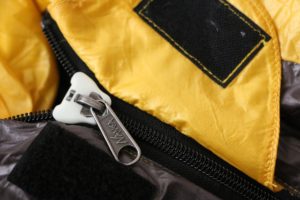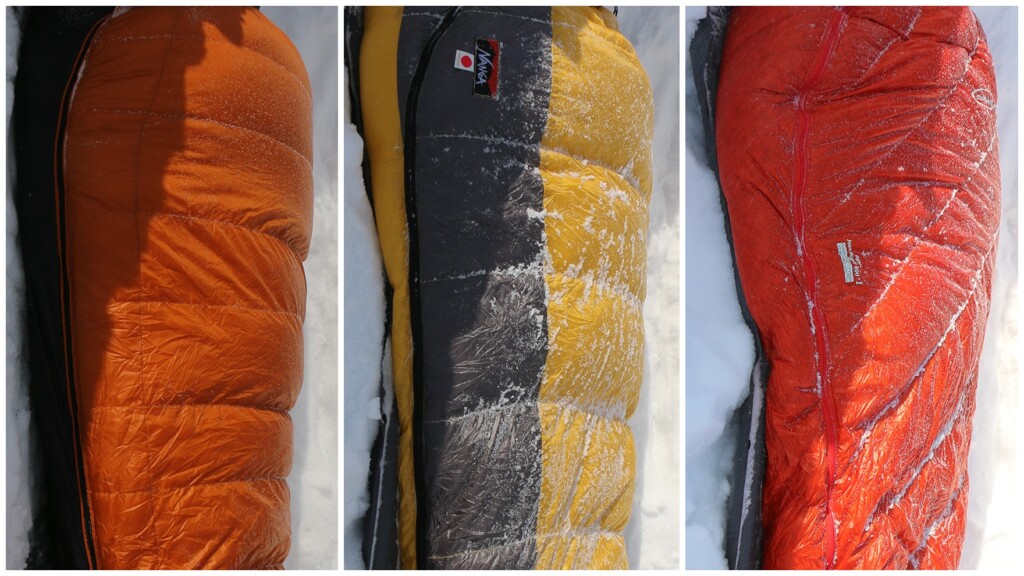
Comparison review: Winter Down Sleeping Bags Who did you get a warm, calm sleep even in the extremely cold winter mountains?
Of course, winter sleeping bags (sleeping bags) are indispensable when spending nights in the harsh cold, such as in a tent in the winter mountains.
Restoring your exhausted body with a warm and comfortable sleep can have a major impact on your next day's behavior. On winter mornings, the inside of the sleeping bag is so comfortable that you can't even get out of it.
On the other hand, mountains are all year round, but if you spend the night with inadequate bedding, you may be unable to sleep due to the cold, wake up multiple times in the middle of the night, or in the worst case scenario, you may end up with hypothermia. In that sense, sleeping bags are expensive, but it is one of the gears that you need to choose carefully.
So, what kind of sleeping bag should I choose? Since it is used for freezing low temperatures, it is only natural that it has high heat retention. If you're camping or sleeping in a car, you can just carry something warm even if it's a little bit bigger. However, this is not the case when used for mountain climbing. The question is how efficiently and without compromising this warmth, it becomes possible to achieve its convenience and safety.
As an aside, the down padding used in winter sleeping bags has specifications that are comparable to those of poorly sophisticated high-end down comforters, allowing you to enjoy the ultimate sleeping comfort even in the lower reaches.
So, this time, in order to find a product that can be absolutely trusted in the winter outdoors, we have compared and examined the winter models from the three most popular domestic manufacturers that Japan is proud of.
Both sleeping bags are models that are expected to be widely used in most severe winter mountains, with a 2,000m class domestically. I was surprised by the spirit of making products, not only in terms of heat retention, but also in the details of the product-making spirit that is created from the user's perspective.
table of contents
table of contents
- About the items we compared and tested this time
- Test results and spec comparison table
- Impressions of each model
- Detailed reviews of each item
- summary
Sleeping bags compared this time
Here are the three models we compared this time. It is a well-known three major brands of authentic outdoor and mountain climbing sleeping bags. There are many excellent models overseas too, but in Japan, these three companies are so strong that they cannot enter the market, making them a brand with a high level of reliability in basic performance.
That's why don't you want to compare which of these three is better (or worse)? That's the theme of this comparison test!
Although it is called a winter sleeping bag, there are various models depending on the quality and quantity of down, but the current usage environment is that it is a model that can be used well in mountains during the harsh winter (2,000m class south of Tohoku), so we have picked out a lighter model that can be used for mountain climbing with a limit of around -10°C.
- ISUKA AIR 630EX
- mont-bell alpine down hugger 800#1
- NANGA UDD BAG 630DX
Test environment
The test period lasts for two seasons from 2018 to 2019, and is in the harsh winter in Hokkaido. The environment is used in tents, sleeping in the car, or outdoors in strong winds. When I sleep, I wear a base layer, fleece, a down jacket, and a base layer and trekking pants.
I also tried to sleep in my sleeping bag when I went to bed, in order to verify the comfort of my sleeping bag at home. In total, you'll be sleeping in your sleeping bag for about two months!
The following five points were set as indicators for review of the evaluation items.
- Thermal insulation...needless to say, this is the most important item in a winter sleeping bag. Of course, it doesn't mean that just warm is fine no matter how heavy it is. Furthermore, this is merely a comparison between the models this time, so it cannot be said for all models in the brand.
- Weight: I want to keep the weight down as much as possible when I use winter mountain equipment that is bulky. However, this also balances with heat retention, and it's not just that it's light enough.
- Comfort: Check how comfortable you are sleeping. It can be a bit distracting when it becomes extremely cramped to achieve both weight and heat retention.
- Portability (storageability): Just like the above weight, it is something you should not miss from the perspective of carrying it around.
- We check how close the user is to the actual situation, such as functionality, water repellency, ease of use, and ability to respond to poor conditions.
Test results and spec comparison table
If you find it difficult to see the table because it is lightweight for smartphones, click here
Impressions of each model
ISUKA AIR 630EX
This is ◎
- Excellent heat retention
- touch
- Fit
- The zipper is very smooth
This is △
- The hood is shallow
- Storage size and weight
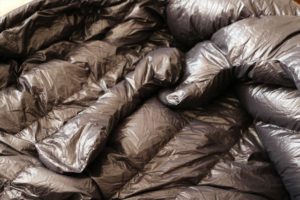
The shoulder warmers that wrap around the front and back of the neck fit naturally without any adjustments.
In a nutshell, it's "simple and robust." This model focuses on sleeping comfortably, and is packed with high heat retention and simple functions, making it a model that can be used safely even in the harsh winter.
The supple texture on the inside and the 800FP white goose down, which has excellent padding, not only allowed you to sleep well until the morning even during field tests at 15 degrees below zero, but also provided an exquisite sleeping experience that is comparable to a high-end down comforter.
In my personal opinion, it is the best of the three models in terms of heat retention. In particular, there was a lot of down sealed inside my feet, so my feet were still slurping until morning. From here, I think that the manufacturer's specifications, "minimum operating temperature -15°C," is probably close to the "limit temperature" according to the EN standard.
Unlike the other two models, the U-shaped shoulder warmer that wraps around the neck is not a drawstring type, but the soft fabric fits well so you won't be bothered. Personally, I think I prefer not having a drawcord to it as simple as it doesn't get in the way.
In addition, the draft tube located on the zipper part firmly prevents cold air from entering the zipper. The zipper with a mitigation reduction function generally works well, but since there was no biting at all, I felt that there was still room for improvement.
The waterproof test showed excellent water-repellent properties of the outer material, and although it continued to apply water in the shower for about 3 minutes, it did not show any penetration into the down. However, once the down got wet, it became sluggish afterwards, and I felt it would be difficult to use it on the field.
The hood is the shallowest of the three models, and the entire head is not the type that can fit completely inside, so when used outdoors in strong winds, the cold that the head and face inevitably suffered from.
The price is the highest this time, but overall I think it's a sleeping bag that has the heat retention, comfort and functionality that matches it. As expected from Japan's proud brand, ISUKA. This model was a model that I would confidently recommend.
mont-bell alpine down hugger 800#1
This is ◎
- Stretchability
- Storageability
- light
- Water repellent performance on the surface
This is △
- Fit around the neck
- Zipper biting
It's the cheapest of the three models, so to be honest, I was quite disrespectful at first, but to put it simply, it was a good idea to be disappointing. It's truly cost-effective.
The first thing that surprised me was the high insulation properties. The sleeping bag, which is packed with 800FP EX down, boasting high resilience, was not as good as ISUKA, but it felt warmer than Nanga, which has the same temperature mark. This subtle difference seems to be more about the quality of the down, but rather the overall feel of the various mechanisms that prevent the intrusion of cold air, such as the high density outer fabric "Balistic Air Light", the neck baffle around the neck, and the "double draft tube" that is attached to hold a zipper.
Above all, Montbell's unique "spiral stretch system" allows even authors who have trouble sleeping with poor sleeping positions to move comfortably inside their sleeping bags, providing a unique sleeping comfort. I had plenty of time to change clothes inside my sleeping bag, and I wear cross-legged clothes, so I can wear my sleeping bag even when I'm not sleeping during the cold season. This is also warm and easy to use.
The included staff bag also uses the same spiral stretch system as the sleeping bag, which not only reduces stress when storing, but also changes shape to fit into the dead space inside the backpack, making packing very easy.
Unfortunately, the chuck bites frequently. In particular, when closing the zipper from inside the sleeping bag, the bite occurs once in three times, and if you force it to close it, there is a risk of damaging the fabric, so the more you do it carefully, the longer it takes and I feel very stressed.
Overall, it is lightweight, cost-effective, and has unparalleled comfort, such as stretching functions, but I have the impression that it is not as good as the other two in terms of sleeping comfort and the detailed parts construction.
NANGA UDD BAG 630DX
This is ◎
- touch
- Large hood
- Water-repellent down
- Smooth zipper that is hard to bite
- Storage size
This is △
- Thermal insulation
- Cold air from the zipper
Speaking of Nanga, it's a very grateful "permanent guarantee." With this system, users will be trying to cherish it for the rest of their lives. The UDD BAG 630DX has been released by Nanga. DX down made from white duck down from Europe washed in Japan. This UDD is a water-repellent down that is treated with a super water-repellent finish, and is made into a water-resistant down that "passes through moisture but does not absorb water."
I'm concerned about the water resistance, but first, I'll talk about heat retention. The insulation was satisfactory at the specified temperature range (up to -10°C). It also has a great mechanism to prevent cold air from entering, such as the neck area and draft tube, and the large hood warms the head, making it a great piece. However, when comparing the temperature exceeded the limit and in harsher environments such as low temperatures of around -15°C and strong wind conditions, it is also true that this comparison was the easiest to feel the cold air. I've been feeling the cold air coming in, especially from the zipper and the feet. There may be a difference in quality down quality, but I was surprised that it felt colder than the same Montbell based on the EN standard.
Now, regarding the water resistance, it's a concern, when you submerge the down underwater, it will instantly rise. After repeating it several times, the result was the same, and the entire down was a little wet, but it didn't become slurpy. The other two models were not only shining after repeating them a few times, but rather became shaky, so I was surprised by the results. Of course, wet down will lose its heat retention, so if you use a UDD that repels a little moisture and moisture, it is unlikely to lose its heat retention even if used in harsh environments for a long time.
The zipper is a luminous type with a light-emitting design that reduces biting. It's very helpful that it's excellent visibility even in the dark. Bite reduction also works well. In reality, if you close the zipper with force without stretching the fabric, it will bite at a certain rate.
Although the heat retention of the three models is slightly inferior, it is one of the things that has an unparalleled charm, such as the ease of use and security of the water-repellent down, the fine details including the luminous zipper, and the reliability of the life-saving warranty system.


